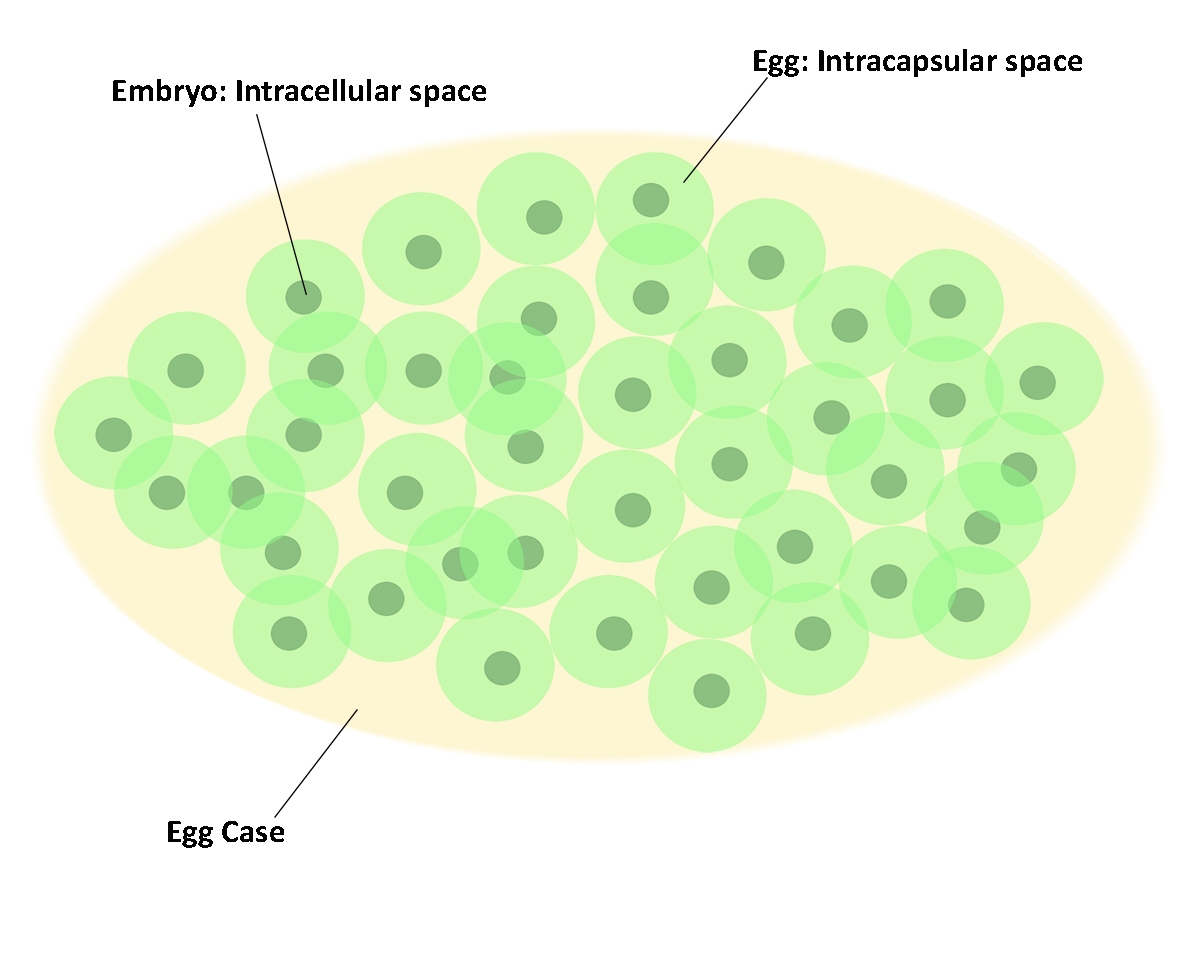Spotted Salamander Symbiosis: Content Primer
Modern Research, Part III
Kerney and Graham’s work shows that this is a unique form of symbiosis between an algal species, Oophila amblystomatis (Oa), and a vertebrate animal, Ambystoma maculatum (Am).
Research by Burns et al (2017)11 sheds new light on this relationship. Their research compares the algae, O. amblystomatis (Oa), and its interactions and reactions with the salamander by looking at Oa that colonizes space within an individual egg (intracapsular space) and the actual cells of the salamander embryo (intracellular space). See Fig. 8.

The research findings are fascinating because it suggests the algal symbiotic interaction with the embryo is more akin to an “invasion.” This interaction of the algal cells and embryo are intriguing. Below are some of the major points of the research to ponder:
Algal cells that colonize the intracapsular space of an egg react in the following ways:
- They exhibit more normal functions of respiration than those occupying intracellular spaces.
- They maintain the ability to photosynthesize at reduced levels compared to cells outside the egg case.
Algal cells that colonize the intracellular space of the embryo react in the following ways:
- They demonstrate signs of stress due to low oxygen and as a result, switch to fermentation (a process to produce energy under low oxygen conditions) to support metabolism and energy production.
- They are shown to use glutamate from the host salamander as a nitrogen source.
Salamander cells that are colonized by Oa react in the following ways:
- They express genes that control immune response suppression thereby making it possible for Oa to colonize or invade the cells.
- They do not demonstrate similar stress responses as algal symbionts.
- They are provided with energy sources from photosynthetic products although at low levels.
Some of this information may seem a bit confusing at first since many of us have ‘stumbling blocks’ from biology class. A good example is, in many instances, high school students are taught about respiration from the “animal” perspective (animals use oxygen during respiration). Students are often taught about plants from the “photosynthesis” perspective (plants produce oxygen during photosynthesis). A missing component is that all organisms, plants included, utilize some type of respiration. That respiration can be a type that: 1) uses oxygen, 2) uses anaerobic respiration, or 3) uses fermentation to produce energy. So, when plants and fermentation are mentioned together it often results in confusion.
The research of this unique symbiosis is on-going and new information will be interpreted when it is available. This symbiotic relationship between Oophila amblystomatis and Ambystoma maculatum provides a unique opportunity to integrate many concepts in biology, ecology, and project-based learning in the classroom.
